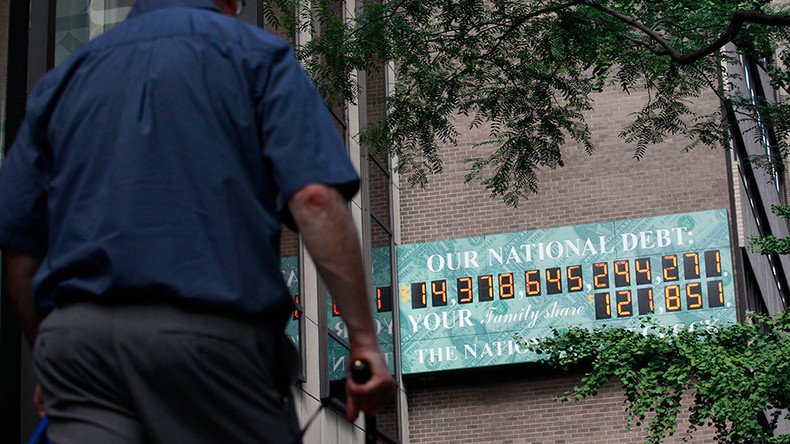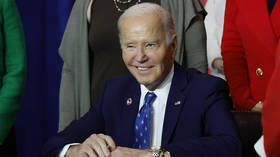Under Trump or Clinton economic plans, US national debt would grow

Tax and economics plans from Republican Donald Trump and Democrat Hillary Clinton would both raise the national debt.
“We recently estimated that Clinton’s policies would likely add $200 billion to the debt over the next decade, while Trump’s policies would add $5.3 trillion,” stated the Committee for a Responsible Federal Budget in a report published this week.
“We also found that the ratio of debt to Gross Domestic Product would rise from nearly 77 percent of GDP today to 86 percent by 2026 under Clinton, and 105 percent under Trump.”
The report’s findings are at variance with Hillary Clinton’s take on the issue during the third presidential debate on Wednesday.
“I pay for everything I am proposing,” said the former secretary of state, in answer to a question that included the report’s figures. “I do not add a penny to the national debt.”
Clinton’s plan would include a tax hike on high earners, increasing child tax credit and reforming capital gains taxes.
That same analysis found Donald Trump's plan would speed up the national debt increase from $14 trillion to $28 trillion.
Under Trump, taxes would be reduced across the board, as he also wants to reduce marginal tax rates, increase standard deduction amounts and reduce corporate tax rates to 15 percent.
.@realDonaldTrump says he will not worsen national debt as he will create "tremendous jobs" #DebateNighthttps://t.co/45BnbvasJf
— Sky News (@SkyNews) October 20, 2016
Trump’s deputy policy director said that the report’s analysis only looked at a small portion of the Republican candidate’s economic plan.
“The Trump economy achieves 4 percent growth, adds at least 25 million new jobs, and generates at least $2.4 trillion in positive revenue offsets when the positive effects of a reduced regulatory burden the unleashing of our energy sector, and the elimination of our trade deficit are taken into account,” Dan Kowalski said in a statement to CNBC.
BREAKING: @wikileaks releases new batch of emails from Clinton campaign chief #podestaemails13https://t.co/qAL13grteO
— RT America (@RT_America) October 20, 2016
During last night’s debate, Trump said Clinton’s “plan is going to raise taxes and even double your taxes.”
.@realDonaldTrump call @HilaryClinton a "nasty woman" after she says she'll raise taxes on the wealthy elite.https://t.co/H9PQhUza4B
— Mr. Jameson Neat (@MrJamesonNeat) October 20, 2016
Under her plan, Clinton said she wouldn't raise taxes at all for 95 percent of Americans, according to the nonpartisan Tax Policy Center. The very wealthiest would take the greatest hit, though a doubling is highly questionable.
The AP reports two-thirds of her proposed increases would hit the top 0.1 percent of richest Americans, the center estimates.
Trump Says Clinton Is Raising Your Taxes. Not So Fast - NBC News https://t.co/5Fr9JX690H
— Thom O'Connor (@SchoharieBuzz) October 20, 2016
Clinton’s plan envisages a minimum 30 percent tax on those earning at least $1 million a year, and 4 percent tax surcharged for those earning more than $5 million.
She would also cap the value of tax deductions and exclusions for wealthier taxpayers.
But Trump is correct that government would shoulder higher costs with Clinton’s plan to make college debt-free.
#Trump mislead public about income ‒ records https://t.co/sNlAJhGAU4pic.twitter.com/IUvH3Km7LZ
— RT America (@RT_America) October 11, 2016
Clinton would have the government pay for in-state tuition at public colleges and universities for students from families earning less than $125,000 a year. Students would still need to foot the bill for housing and food, which makes up more than half of the average $18,943 sticker price at a four-year public university, according to the College Board.
Her plan would cost the federal government an estimated $500 billion over 10 years, with additional costs possibly for state governments.












